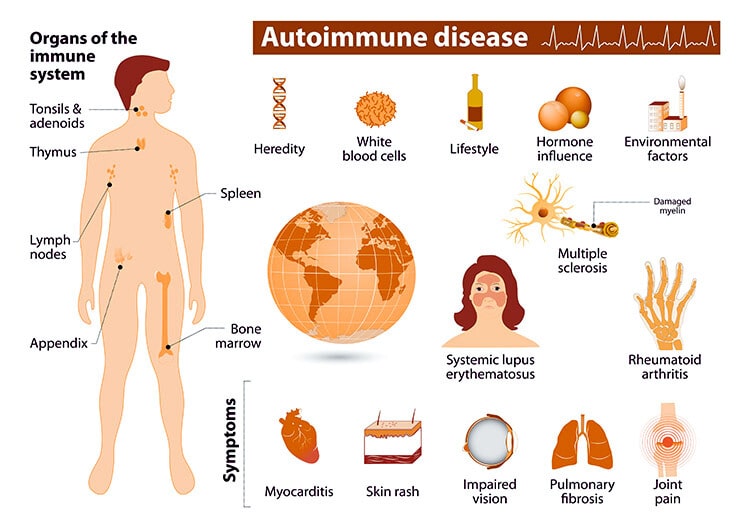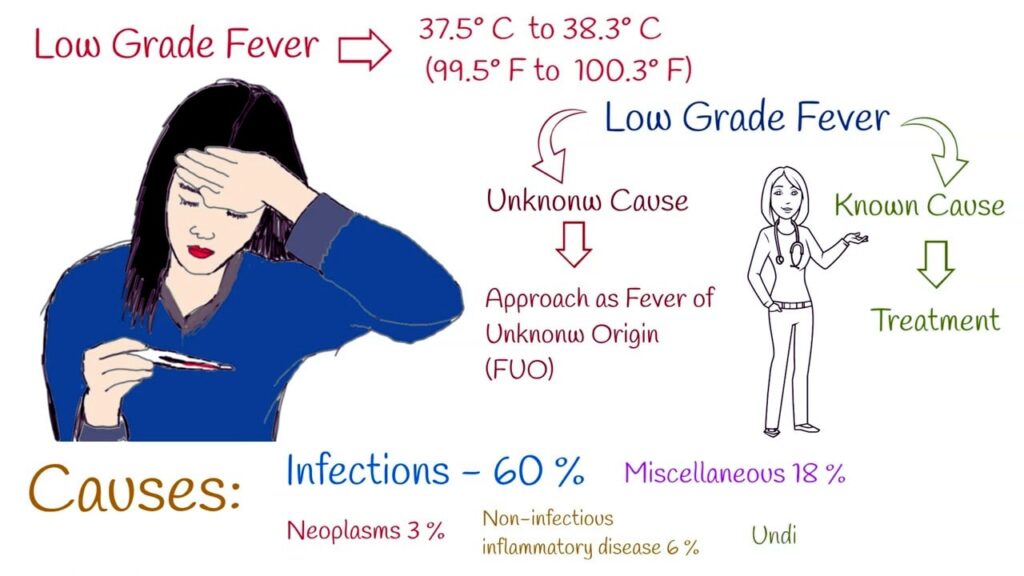Introduction to Fevers
A fever, known scientifically as pyrexia, is the body’s natural response characterized by an elevation in core body temperature above the normal set point. This physiological mechanism is often triggered by the immune system’s response to infections (such as viruses or bacteria), but can also result from other conditions, including autoimmune and autoinflammatory diseases. The body’s thermostat, located in the hypothalamus, resets at a higher temperature during a fever, which is believed to help the body fight off infection more effectively.
The Basics of Body Temperature
Body temperature is a key indicator of health and wellness, typically reflecting the balance between the body’s heat production and heat loss. The normal body temperature for a healthy adult is around 37°C (98.6°F), though this can vary slightly based on factors such as the time of day and the individual’s activity level.
A fever, or elevated body temperature, often indicates an immune response to infections such as the flu, but can also be triggered by other conditions. It is considered a symptom rather than a disease itself, serving as part of the body’s defense mechanism against illness. The threshold for fever is typically 100.4°F (38°C) or higher when measured with a thermometer.
Methods of measuring body temperature include rectal, armpit, ear, forehead, and mouth thermometers, each with its advantages and levels of accuracy. Understanding and monitoring body temperature can be crucial for diagnosing and managing health conditions effectively.
What Counts as a Fever?
A fever is typically defined as a rise in body temperature above the normal range. For adults, a fever is usually considered to be a body temperature of 100.4°F (38°C) or higher. Normal body temperature for adults varies but is commonly accepted to be around 37°C (98.6°F), although variations from 97°F (36.1°C) to 99°F (37.2°C) can be normal depending on the individual and the time of day. For babies and children, the normal temperature range is slightly higher, from 97.9°F (36.6°C) to 100.4°F (38°C).
It’s important to note that body temperature can be influenced by various factors, including age, activity, and the time of day, with temperatures generally being lower in the morning and higher in the late afternoon and evening.
The Causes Behind the Heat
Infections and Your Immune Response

When your body detects an infection, such as bacteria or viruses, your immune system responds by releasing chemicals into your bloodstream. These chemicals signal the brain to increase the body’s temperature, resulting in a fever. This temperature rise can create a less favorable environment for the invading organisms and can enhance the body’s healing processes. Fevers are a common and natural part of the immune response, indicating that your body is actively fighting an infection. However, extremely high fevers can be harmful and require medical attention. The body’s normal temperature range is between 97°F (36.1°C) and 99°F (37.2°C), and temperatures above this range, particularly those exceeding 100.4°F (38°C), are generally considered febrile, indicating fever.
Other Causes of Fever
Overexertion and Heat Exhaustion

Fever is typically a sign that your body is fighting an infection, but it can also result from non-infectious causes like overexertion and heat exhaustion. Overexertion can lead to heat exhaustion when the body overheats due to intense physical activity, especially in hot and humid conditions. This condition manifests when the body’s methods of cooling itself, such as sweating, are insufficient to counteract the heat generated by vigorous activity, leading to an increase in body temperature. Heat exhaustion can cause symptoms akin to fever, such as elevated body temperature, sweating, and dehydration. While fever as part of the immune response is a well-documented and evolutionary conserved reaction to infection, overexertion and heat-related illnesses represent a direct physiological consequence of the body’s inability to manage excessive heat.
Medications and Vaccinations

Fever can be a side effect of certain medications and a common response to vaccinations. Some medications, including antibiotics and drugs used to treat high blood pressure or seizures, may induce fever as an adverse reaction. This condition, known as drug fever, results from a hypersensitivity reaction to the medication.
Vaccinations can also cause a low-grade fever. This response is a natural part of the body’s development of immunity and is generally considered a sign that the vaccine is working effectively. The fever after vaccination reflects the immune system’s activation as it learns to recognize and fight the disease-causing organism. It’s a common and expected reaction, indicating that the body is building protection against the disease.
Autoimmune Diseases

Autoimmune diseases can cause fever due to the body’s immune system mistakenly attacking its tissues, leading to inflammation and a rise in body temperature. These conditions can trigger fevers because the immune system’s abnormal activity increases the body’s temperature as part of its response to what it wrongly perceives as pathogens. This can happen in various autoimmune disorders, each with its specific mechanisms and effects on the body. For example, systemic lupus erythematosus (SLE) and rheumatoid arthritis (RA) are known to cause fevers because of the chronic inflammation they produce in the body. Similarly, conditions like Crohn’s disease and ulcerative colitis can cause fever due to inflammation in the gastrointestinal tract. The fever associated with autoimmune diseases is often a sign of active inflammation or a flare-up of the condition.
Types of Fever
Low-Grade Fevers

Low-grade fevers are often indicative of a mild underlying issue, such as a viral infection, and are typically defined by a body temperature that is slightly elevated above the normal range but does not exceed 100.4°F (38°C). These fevers can be symptoms of various conditions ranging from common infections to more complex diseases including autoimmune disorders. In autoimmune diseases, the immune system mistakenly attacks the body’s tissues, leading to inflammation that can cause a persistent low-grade fever. Recurrent low-grade fevers are also a hallmark of autoinflammatory diseases, which are characterized by inflammation without the high antibody levels typical of autoimmune responses. In addition, conditions such as cyclic neutropenia and certain tick-borne diseases can present with recurrent fevers as part of their symptomatology.
High-Grade Fevers
High-grade fevers, typically characterized by a body temperature exceeding 103°F (39.4°C), can signal serious infections or conditions requiring medical attention. Causes for such elevated temperatures often include severe infections (like pneumonia or meningitis), heat exhaustion, inflammatory conditions, and reactions to medications or vaccines. It’s essential to monitor symptoms accompanying the fever, such as dehydration, headache, or unusual behavior, as these may warrant immediate care. Treatment might involve over-the-counter fever reducers like acetaminophen or NSAIDs, but consulting a healthcare provider is crucial to address the underlying cause effectively.
Symptoms to Watch For
Accompanying Symptoms
Fever can be accompanied by a variety of symptoms, depending on its cause and severity. Common accompanying symptoms include:
- Shivering and feeling cold when others do not.
- Sweating, as the body attempts to cool down.
- Low appetite, which is a common response to illness.
- Signs of dehydration, such as feeling thirsty or producing less urine.
- Increased sensitivity to pain and general discomfort.
- Lack of energy and feeling weak or fatigued.
- A flushed face and hot, dry skin, indicate the body’s effort to manage temperature.
- Changes in urination, like the low output of urine or dark urine, point towards dehydration.
- Digestive issues, such as constipation, diarrhea, or vomiting.
Understanding these symptoms can help in recognizing the body’s response to infections or other health issues and deciding when medical attention might be necessary.
When to Seek Medical Attention
You should consider seeking medical attention for a fever under the following circumstances:
- For Adults: Seek medical advice if the fever is 103 F (39.4 C) or higher, or if it’s accompanied by symptoms such as severe headache, severe throat swelling, an unusual skin rash, sensitivity to bright light, stiff neck, and pain when bending the head forward, mental confusion, persistent vomiting, difficulty breathing, chest pain, abdominal pain, pain when urinating, or if the fever persists for more than three days.
- For Children: Immediate medical attention is advised if a baby under 3 months old has a rectal temperature of 100.4 F (38 C) or higher, if a child of any age is lethargic or irritable, refuses to drink fluids, has a seizure, has a fever after being left in a hot car, or if the fever lasts more than one day in a child under 2 years old or more than three days 2 years old or older.
These guidelines help in identifying situations where a fever could indicate a serious health issue requiring prompt medical evaluation.
Treating Fevers at Home
Simple Home Remedies
For managing a fever at home, consider these simple remedies:
- Stay Hydrated: Drink plenty of fluids to prevent dehydration, a common concern with fevers.
- Vitamin C Intake: Consuming foods rich in vitamin C, such as drinking lemon juice mixed with lukewarm water, can help improve immunity and potentially reduce fever.
- Rest: Ensure ample rest to aid your body’s natural healing process.
- Light Clothing: Wear light clothing and use a light blanket if necessary, to avoid overheating.
- Cool Compress: Apply a cool compress to your forehead or take a lukewarm bath to help lower your body temperature.
Remember, these remedies are supportive measures. If your fever is high, persistent, or accompanied by severe symptoms, seeking medical advice is crucial.
Over-the-Counter Medications
When it comes to treating fever and pain, several over-the-counter (OTC) medications are considered effective. These include:
- Acetaminophen (Tylenol, others): Recommended for reducing fever and relieving pain without causing stomach irritation. Always follow the proper dosage guidelines to avoid liver damage.
- Ibuprofen (Advil, Motrin IB, others): An NSAID that can reduce fever and relieve pain as well as inflammation. It’s important to use ibuprofen as directed to minimize the risk of gastrointestinal and cardiovascular side effects.
- Aspirin: Effective for fever and pain relief but should be avoided in children and teenagers due to the risk of Reye’s syndrome, a rare but serious condition.
For specific conditions like colds or flu, additional OTC medications might be recommended, such as decongestants for nasal congestion and cough suppressants. Always consult with a healthcare provider to ensure the chosen medication is appropriate for your symptoms and health status.
Prevention: Keeping the Heat at Bay
Vaccinations and Hygiene
Preventing illnesses, especially those that can cause fever and other severe symptoms, involves a proactive approach focusing on vaccinations and hygiene practices.
1. Vaccinations:
They are crucial in preventing infectious diseases. Staying up-to-date with recommended vaccines for influenza, COVID-19, measles, and other infectious diseases can significantly reduce the risk of contracting and spreading these illnesses. Vaccines work by preparing the immune system to recognize and fight specific viruses and bacteria, thereby preventing future infections.
2. Hygiene Practices:
- Handwashing: Regular and thorough handwashing with soap and water is one of the most effective ways to prevent the spread of infectious diseases. If soap and water are not available, an alcohol-based hand sanitizer can be used.
- Respiratory Hygiene: Covering the mouth and nose with a tissue or the elbow when coughing or sneezing can prevent the spread of pathogens through respiratory droplets.
- Avoid Touching Face: Hands can pick up viruses from surfaces, so avoiding touching the eyes, nose, and mouth can reduce the risk of infection.
- Clean and Disinfect Surfaces: Regular cleaning and disinfection of frequently touched objects and surfaces (like doorknobs, smartphones, and countertops) can help minimize the risk of disease transmission.
- Avoid Close Contact: Staying away from people who are sick, and maintaining a safe distance in public places, can reduce the risk of catching airborne or droplet-transmitted diseases.
Implementing these preventive measures can significantly contribute to individual and public health, keeping infectious diseases at bay and reducing the incidence of fever and other symptoms associated with various infections.
Healthy Lifestyle Choices
Adopting healthy lifestyle choices is essential for maintaining overall well-being. Based on the latest guides and tips for 2024, here are key habits to incorporate into your daily life:
- Balanced Nutrition: Prioritize a diet rich in fruits, vegetables, whole grains, and lean proteins. Avoid processed foods and those high in sugar and saturated fats.
- Regular Physical Activity: Aim for at least 150 minutes of moderate aerobic activity or 75 minutes of vigorous activity each week, along with muscle-strengthening exercises on two or more days a week.
- Adequate Sleep: Ensure 7-9 hours of quality sleep each night to support immune function, mood regulation, and cognitive processes.
- Hydration: Drink plenty of water throughout the day. Staying hydrated is vital for digestion, skin health, and maintaining energy levels.
- Stress Management: Incorporate relaxation techniques such as mindfulness, meditation, or yoga into your routine to reduce stress and improve mental health.
- Regular Check-ups: Schedule regular health screenings and check-ups to catch any potential health issues early.
By focusing on these key areas, you can significantly improve your health and quality of life in 2024 and beyond.
Conclusion
While fevers can be a cause for concern, understanding them better helps us respond appropriately. Remember, when in doubt, consulting a healthcare provider is always the best course of action.
Read also: What Causes Sleep Paralysis?
FAQs
Q. What is the normal body temperature range?
Normal body temperature typically ranges from 97°F to 99°F (36.1°C to 37.2°C).
Q. Can stress cause a fever?
Yes, in some rare cases, emotional or psychological stress can trigger a stress-related fever.
Q. How long should a fever last before seeing a doctor?
It’s generally advised to see a doctor if a fever lasts more than three days or if it’s accompanied by severe symptoms.
Q. Are digital thermometers accurate for fever detection?
Yes, digital thermometers are considered accurate for measuring body temperature and detecting fevers.
Q. Can hydration affect body temperature?
Yes, staying hydrated can help regulate body temperature and, in some cases, may help reduce a fever.




